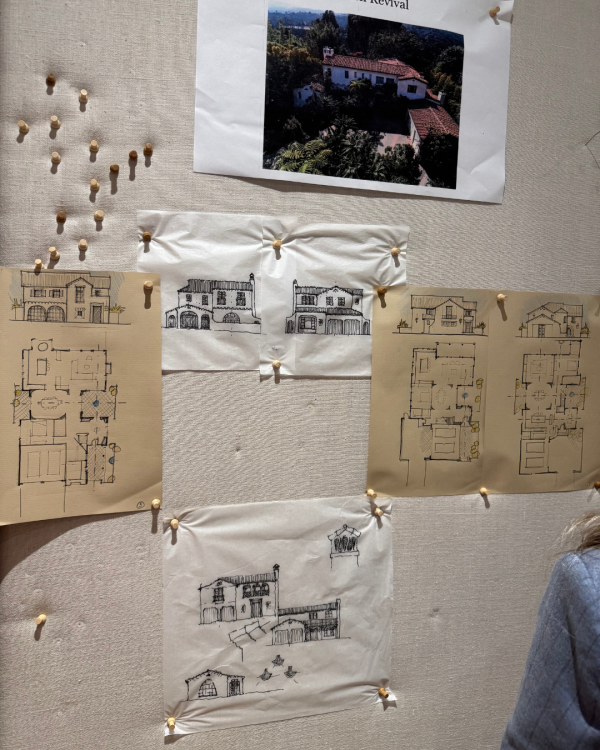
What role can design play in a crisis? Over the course of nearly four months, this has been the driving question behind the DLN’s Rebuilding Committee for California, a virtual advisory group that has been meeting weekly since the outbreak of California’s devastating wildfires earlier this year. From early information sharing discussions to the eventual formation of three Action Groups—Emergency Response, Best Practices, and Design Vision—the group has sought to apply design knowledge and creative thinking to address ever-shifting needs as California communities recover, plan, and rebuild post-fires.
Established based on a suggestion from Michele Trout and Heidi Bonesteel of the LA-based Bonesteel Trout Hall, the Rebuilding Committee has since enlisted over 60 DLN members and partners, including many—like Michele—who have lost their own homes and offices to the fires, to lend their deep knowledge of the built environment to its triple causes. Heidi leads the Best Practices Action Group, whose focus is best practices for design firms and professionals offering discounted goods and fees to fire victims. The Emergency Response Action Group, led by May Sung, keeps track of code and policy changes, with the goal of creating a guide to clearly outline them. The most aesthetics-oriented of the groups, the Design Vision committee takes as its goal an ambitious one: to define the future of LA’s vernacular architecture.
That ambition was on full display this past weekend, when thirty architects, interior designers, builders, and partners from the DLN community gathered in at the Brentwood offices of Studio LIFE/STYLE for a two-day design charette to begin producing The Golden California Pattern Book a guide to seven regionally appropriate architectural styles intended as a starting point for contextually sensitive, community-enriching new designs.
The concept for the pattern book and the charette were put forth by Jaime Rummerfield, who, in addition to running her eponymous design firm (following years as one half of the lauded Woodson & Rummerfield’s), is cofounder with Ron Woodson of Save Iconic Architecture, the Los Angeles nonprofit dedicated to supporting awareness, preservation, and restoration of architectural landmarks. Jaime’s longtime passion and deep familiarity with California’s historic styles provided a valuable reference for defining a new vernacular.
“A lot of people who lost homes don’t have a reference point for California architecture,” Jaime says. “The goal of this pattern book is to give them that, and to provide a list of the creatives who can help them achieve it.”
Over two days of intensive research, drawing, development, and case studies, the group developed patterns for seven architectural styles appropriate and native to Southern California. Their work represents a practical, sensitive, and human-centric path forward for Los Angeles’s built environment, one that prioritizes lifestyle, environment, and community in equal measure as architectural style.
“We had architects, interior designers, landscape professionals; it was a great combination of all different disciplines and talents,” says Bay Area architect Geddes Ulinskas, an active member of the Rebuilding Committee since its inception.
“Just seeing how everybody played so well together was incredible,” effuses Elizabeth Graziolo, founder and principal of Yellow House Architects, who flew to Los Angeles along with one of her staff members to take part in the weekend.
“I almost got teary eyed when I arrived,” Shannon Wollack says of hosting the group in the offices of her firm. “I had never seen such a passionate, dedicated group of people working together so collaboratively.”
“It really was an incredible example of the talent in this group,” says Jaime. “What came out of it is so exceptional.” The next step: compiling the research and drawings into The Golden California Pattern Book, which will be disseminated in the form of a downloadable guide and made available to any interested architects, builders, developers, and the general public in an effort to secure Los Angeles’s design future. Jaime also sees the possibility for a Golden California case study program, further exploring the themes discussed in the charette.
“This initiative is a uniquely powerful example of our community in action,” says DLN CEO Michael Diaz-Griffith. “With deep determination, personal commitment, and a huge amount of collaborative spirit, the DLN’s Design Vision Action Group is forging not just a pattern book, but a future for Los Angeles that preserves the character of local communities, fosters livable neighborhoods, and shapes inspiring streetscapes that feel like home. We are deeply proud of Jaime and the entire group, and we can’t wait to share their work with the world. It’s a vital new resource for everyone engaged in the work of rebuilding and renewing Los Angeles.”